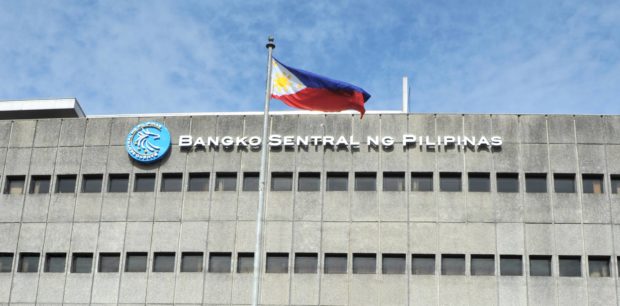The Bangko Sentral ng Pilipinas (BSP) is expected to keep the policy rate at a record-low 2 percent when its Monetary Board meets on Thursday given a still tentative economic recovery amid the prolonged COVID-19 pandemic.
“Despite the upside surprise in the real GDP (gross domestoc product) data in the third quarter, BSP Governor [Benjamin] Diokno noted that the central bank ‘will continue to be patient’ until there is ‘clearer evidence that the economic recovery is on firmer footing,’” Goldman Sachs Economics Research said in a report Friday.
End-September real GDP grew by an average of 4.9 percent, within the government’s 4 to 5 percent target range, following the better-than-expected 7.1-percent jump during the third quarter.
Constraints
“Food supply constraints and global energy prices remain a key risk to our forecast of headline inflation falling to 3 percent year-on-year by early 2022. With headline inflation returning to the BSP’s inflation target band of 2 to 4 percent in our baseline forecasts and the economy only beginning the recovery process from the COVID-19 shock as virus restrictions are eased next year, we expect the BSP to be patient in normalizing policy settings, keeping the policy rate on hold until late 2022,” investment banking giant Goldman Sachs said.
End-October headline inflation averaged an above-target 4.5 percent due to expensive food, especially pork due to the African swine fever outbreak.
In a separate report, Capital Economics said it expected monetary policy in the Philippines to “remain loose for some time.”
Low-base effects
“While the economy is now rebounding, the recovery in the Philippines has a long way to go and the BSP will be in no rush to tighten. We expect rates to be left on hold on Thursday and for some time thereafter,” the London-based think tank said.
Following the “impressive” 3.8-percent quarter-on-quarter growth in third-quarter GDP, Capital Economics said the Philippine economy would “likely grow strongly again this quarter given the sharp fall in new virus cases and an easing of restrictions.”
Capital Economics nonetheless pointed to low-base effects such that the expected “rapid” growth during the second half of 2021 would still keep the Philippines in “catch-up mode” next year.
Based on earlier Capital Economics estimates, the Philippines’ GDP remained 6-percent below prepandemic levels at the end of the third quarter.
“As such, we think the BSP will want to leave policy supportive … Inflation is unlikely to be any impediment. While it is above target now, headline inflation already has started to fall back and should drop sharply over the coming months as the low base drops out of the annual comparison,” Capital Economics said.
“The upshot is that the BSP is unlikely to begin tightening policy until 2023. The consensus view is that it will start hiking next year,” it added. INQ


